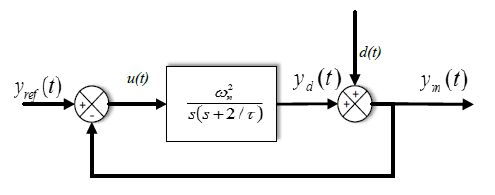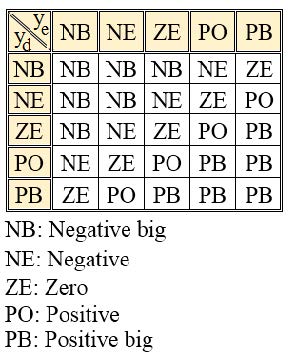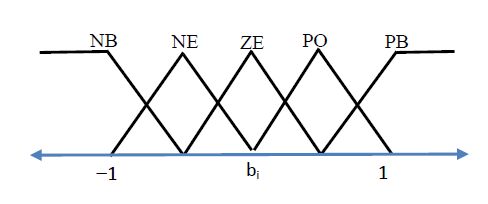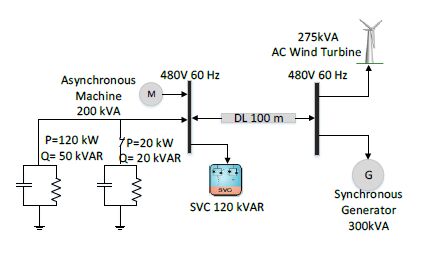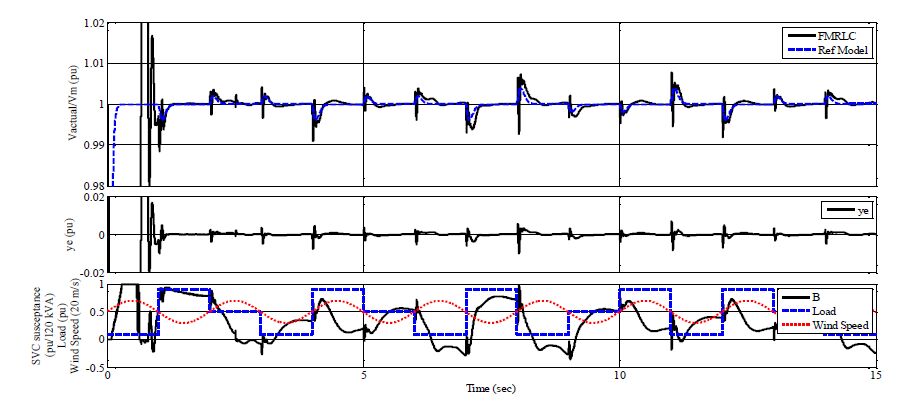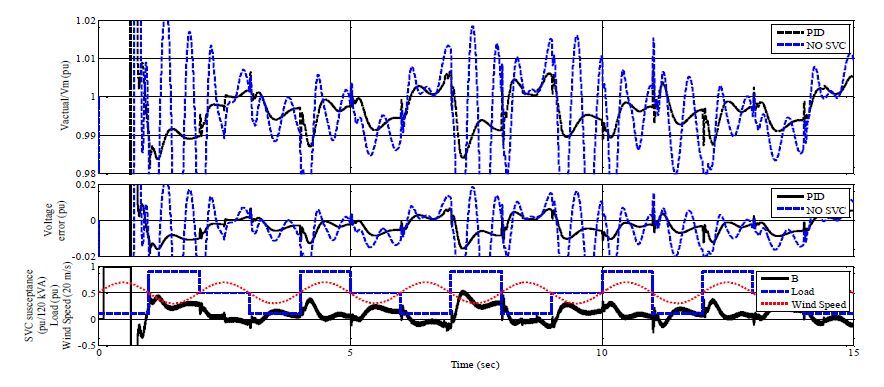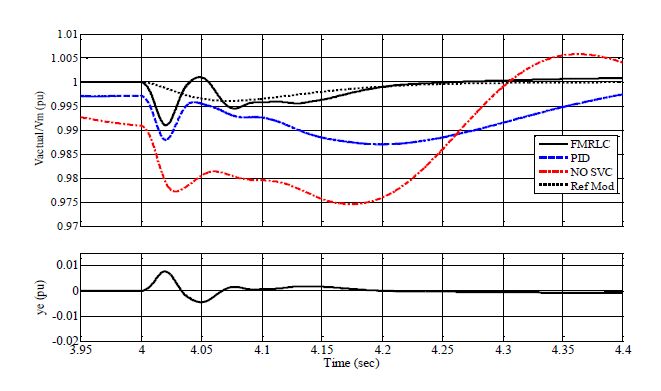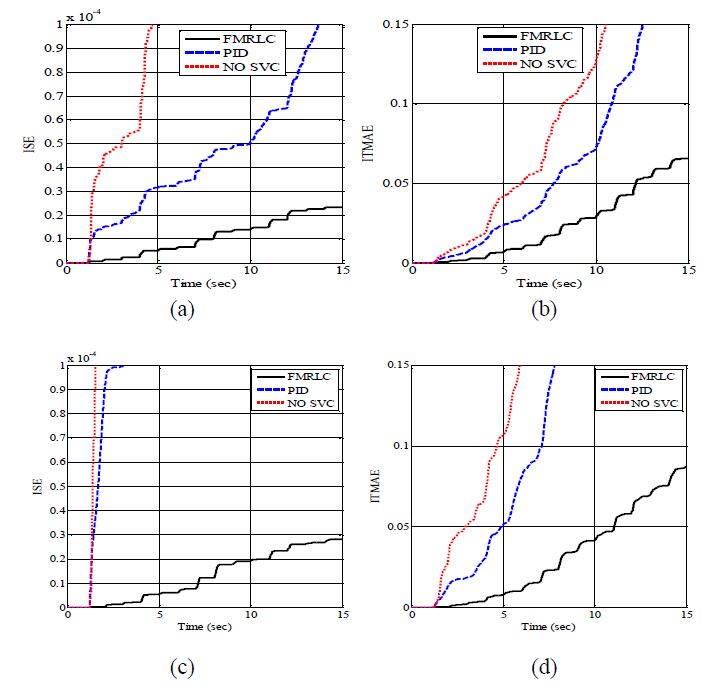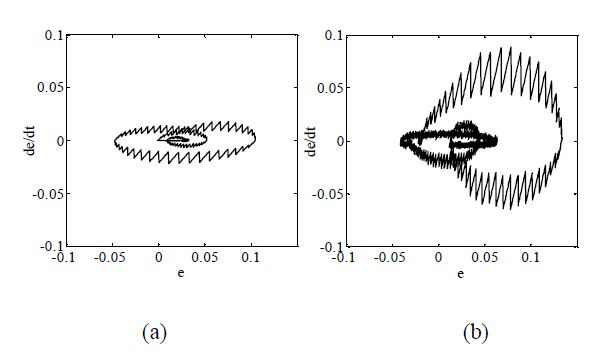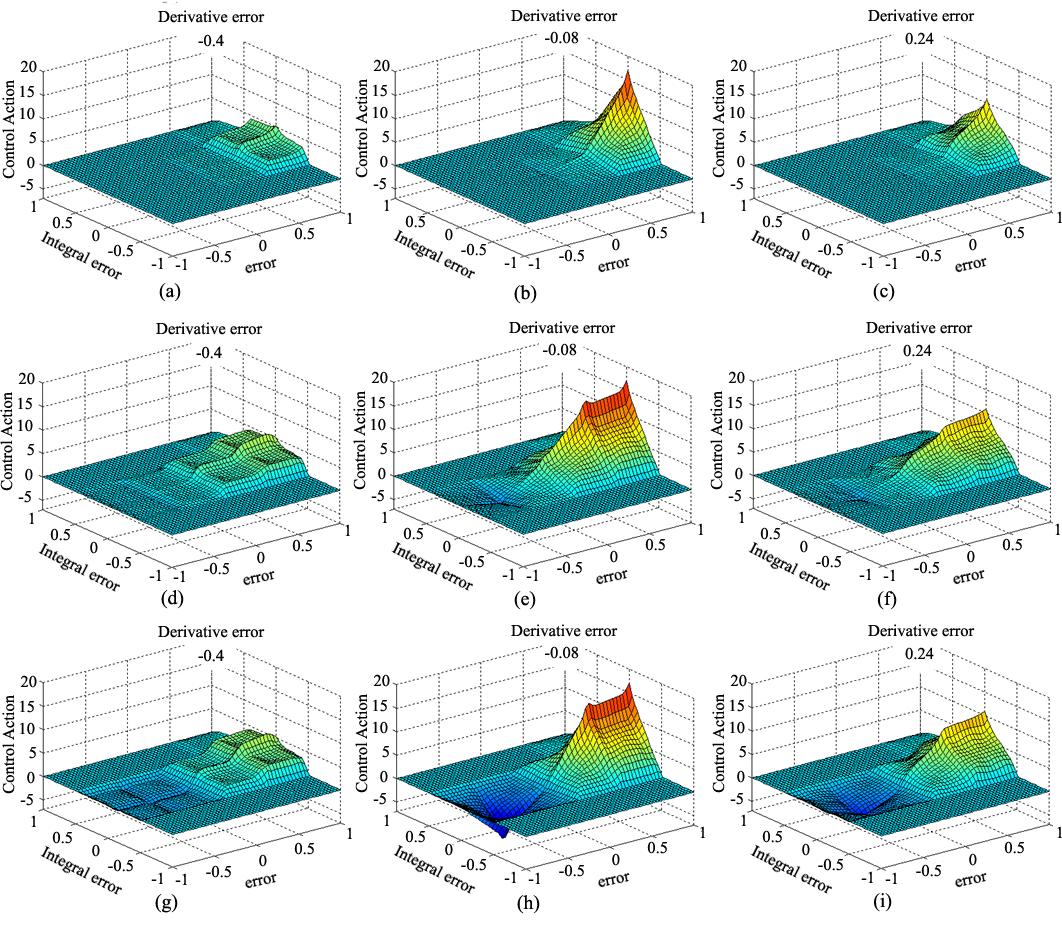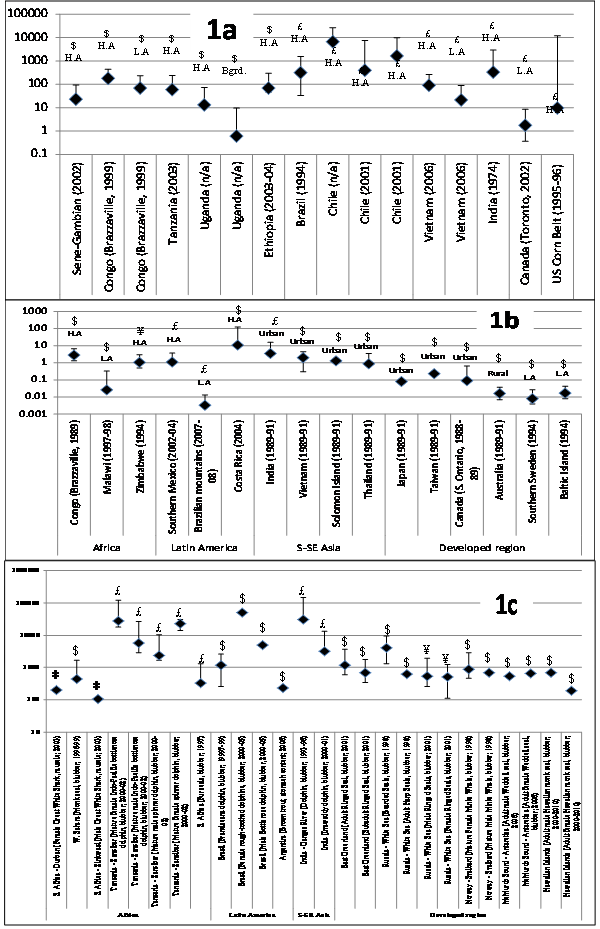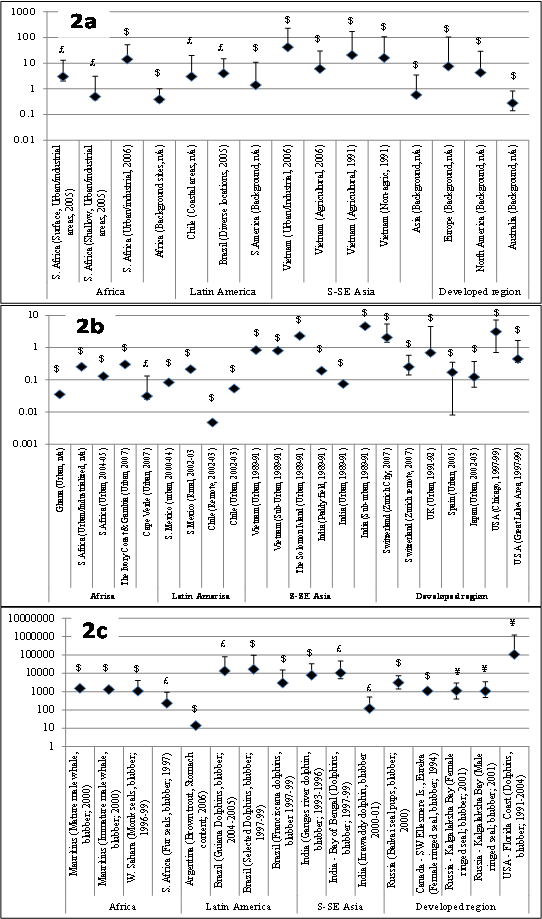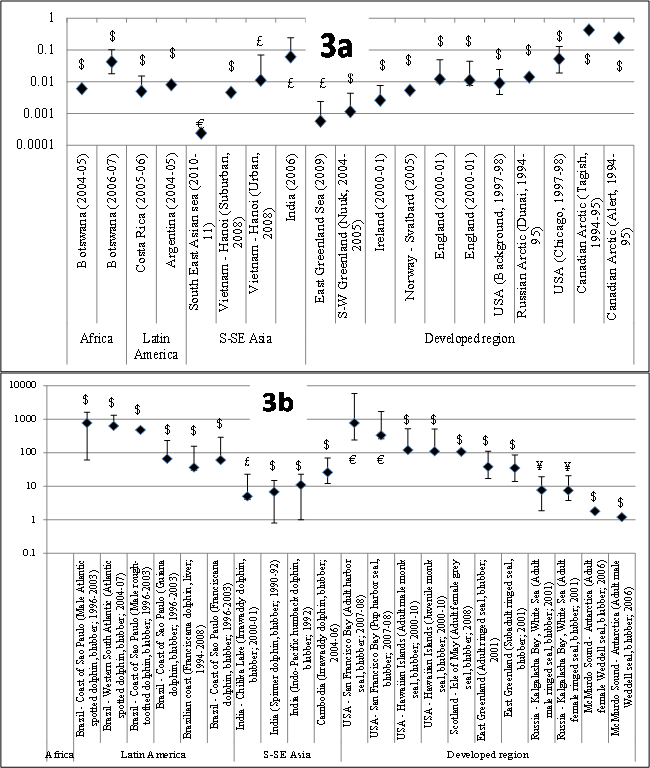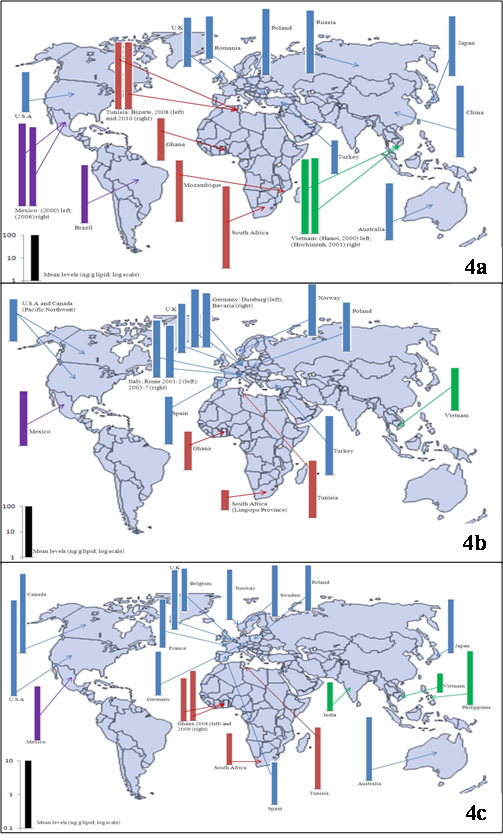|
[1]
|
Stockholm Convention, United Nations Environmental Program, 2011. Available from: http://chm.pops.int/default.aspx.
|
|
[2]
|
Carpenter DO (2006) Polychlorinated biphenyls (PCBs): routes of exposure and effects on human health. Rev on Environ Health 1: 1-23.
|
|
[3]
|
Longnecker MP, Gladen BC, Patterson DG Jr, et al. (2000) Polychlorinated biphenyl (PCB) exposure in relation to thyroid hormone levels in neonates. Epidemiol 11: 249-254. doi: 10.1097/00001648-200005000-00004

|
|
[4]
|
Aoki Y (2001) Polychlorinated biphenyls, polychlorinated dibenzo-p-dioxin, polychlorinated dibenzo furans as endocrine disrupters - what we have learned from Yusho disease. Environ Res86: 2-11.
|
|
[5]
|
White SS, Birnbaum LS (2009) An overview of the effects of dioxins and dioxin-like compounds on vertebrates, as documented in human and ecological epidemiology. J Environ Sci Heal C 27: 197-211. doi: 10.1080/10590500903310047

|
|
[6]
|
Turusov V, Rakitsky V, Tomatis L (2002) Dichlorodiphenyltrichloroethane (DDT): ubiquity, persistence, and risks. Environ Health Persp 110: 125-128. doi: 10.1289/ehp.02110125

|
|
[7]
|
Longnecker MP, Klebanoff MA, Zhou H, et al. (2001) Association between maternal serum concentration of the DDT metabolite DDE and preterm and small-for-gestational-age babies at birth. The Lancet 358: 9276.
|
|
[8]
|
Alavanja MCR, Hoppin JA, Kamel F (2004) Health effects of chronic pesticide exposure: cancer and neurotoxicity. Annu Rev Publ Health 25: 155-197. doi: 10.1146/annurev.publhealth.25.101802.123020

|
|
[9]
|
Rogan WJ, Chen A (2005) Health risks and benefits of bis(4-chlorophenyl)-1,1,1-trichloroethane (DDT). The Lancet 366: 763-773. doi: 10.1016/S0140-6736(05)67182-6

|
|
[10]
|
Nakata H, Kawazoe M, Arizono K, et al. (2002) Organochlorine pesticides and polychlorinated biphenyl residues in foodstuffs and human tissues from China: status of contamination, historical trend, and human dietary exposure. Arch Environ Con Toxicol 43: 473-480. doi: 10.1007/s00244-002-1254-8

|
|
[11]
|
Nasreddine L, Parent-Massin D (2002) Food contamination by metals and pesticides in the European Union. Should we worry? Toxicol Lett 127: 29-41.
|
|
[12]
|
Jiang J-J, Lee C-L, Fang M-D, et al. (2011) Polybrominated biphenyl ethers and polychlorinated bipenyls in sediments of Southwest Taiwan: regional characteristics and potential sources. Mar Pollut Bull 62: 815-823. doi: 10.1016/j.marpolbul.2010.12.019

|
|
[13]
|
Costa LG, Giordano G, Tagliaferri S, et al. (2008) Polybrominateddiphenyl ether (PBDE) flame retardants: environmental contamination, human body burden and potential adverse health effects. Acta Biomed 79: 172-183.
|
|
[14]
|
McDonald TA (2002) A Perspective on the potential health risks of PBDEs. Chemosphere 46:745-755. doi: 10.1016/S0045-6535(01)00239-9

|
|
[15]
|
Yogui GT, Sericano JL (2009) Polybrominateddiphenyl ether flame retardants in the U.S. marine environment: a review. Environ Int 35: 655-666.
|
|
[16]
|
Aguilar A, Borrell A, Reijnders PJH (2002) Geographical and temporal variation in levels of organochlorine contaminants in marine mammals. Mar Environ Res 53: 425-452. doi: 10.1016/S0141-1136(01)00128-3

|
|
[17]
|
de Wit C, Alaee M, Muir D (2004) Brominated flame retardants in the arctic - an overview of spatial and temporal trends. Organochlorine Compounds 66: 3764-3769.
|
|
[18]
|
de Wit CA, Alaee M, Muir DCG (2006) Levels and trends of brominated flame retardants in the Arctic. Chemosphere 64: 209-233. doi: 10.1016/j.chemosphere.2005.12.029

|
|
[19]
|
Lau MH, Leung KM, Wong SW, et al. (2012) Environmental policy, legislation and management of persistent organic pollutants (POPs) in China. Environ Pollut 165: 182-192. doi: 10.1016/j.envpol.2012.01.002

|
|
[20]
|
Bao LJ, Maruya KA, Snyder SA, Zeng EY (2012) China's water pollution by persistent organic pollutants. Environ Pollut 163:100-108. doi: 10.1016/j.envpol.2011.12.022

|
|
[21]
|
Moore SE, Huntington HP (2008) Arctic marine mammals and climate change: impacts and resilience. Ecol Appl 18: 157-165. doi: 10.1890/06-0571.1

|
|
[22]
|
Burton A (2009) Toward DDT-free malaria control. Environ Health Persp 117: A334. doi: 10.1289/ehp.12812

|
|
[23]
|
Manirakiza P,Akinbamijo O, Covaci A, et al. (2003) Assessment of organochlorine pesticide residues in West African City Farms: Banjul and Dakar case study. Arch. Environ. Contam Toxicol 44: 171-179. doi: 10.1007/s00244-002-2006-5

|
|
[24]
|
Ngabe B, Bidleman BF (2006) DDT concentration in soils of Brazzaville, Congo. B Environ Contam Toxicol 76: 697-704. doi: 10.1007/s00128-006-0976-0

|
|
[25]
|
Kishimba MA, Henry L, Mwevura H, et al. (2004)The status of pesticide pollution in Tanzania. Talanta 64: 48-53.
|
|
[26]
|
Ssebugere P (2008) Determination of persistent organic pollutant pesticides in soil in soil and fish from Kanungu District, Uganda. MSc Thesis, Department of Chemistry, Makerere University, Kampala, Uganda.
|
|
[27]
|
Ssebugere P, Wasswa J, Mbabazi J, et al. (2010) Organochlorine pesticides in soils from south-western Uganda. Chemosphere 78: 1250-1255. doi: 10.1016/j.chemosphere.2009.12.039

|
|
[28]
|
Westbom R, Hussen A, Megersa N, et al. (2008) Assessment of organochlorine pesticide pollution in Upper Awash Ethiopian state farm soils using selective pressurized liquid extraction. Chemosphere 72: 1181-1187. doi: 10.1016/j.chemosphere.2008.03.041

|
|
[29]
|
Torres JPM, Pfeiffer WC,Markowitz S, et al. (2002) Dichlorodiphenyltrichloroethane in Soil, River Sediment, and Fish in the Amazon in Brazil. Environ Res 88:134-139. doi: 10.1006/enrs.2001.4312

|
|
[30]
|
Urzua H, Romerot J, Ruizt VM (1986) Effect of p,p' DDT on nitrogen fixation of white clover in volcanic soils of Chile. MIRCEN J 2: 365-372. doi: 10.1007/BF00933478

|
|
[31]
|
Yanez L, Ortiz-Pérez D, Lilia E, et al. (2002) Levels of dichlorodiphenyltrichloroethane and deltamethrin in humans and environmental samples in malarious areas of Mexico. Environ Res88: 174-181.
|
|
[32]
|
Toan VU, Thao VU, Walder J, et al. (2007) Contamination by selected organochlorine pesticides (OCPs) in surface soils of Hanoi, Vietnam. B Environ Contam Toxicol 78: 195-200. doi: 10.1007/s00128-007-9149-z

|
|
[33]
|
Pillai MKK (1986) Pesticide pollution of soil, water and air in Delhi area, India. Sci Total Environ 55: 321-327. doi: 10.1016/0048-9697(86)90189-0

|
|
[34]
|
Wong F, Robson M, Diamond ML, et al. (2009) Concentrations and chiral signatures of POPs in soils and sediments:A comparative urban versus rural study in Canada and UK. Chemosphere 74:404-411. doi: 10.1016/j.chemosphere.2008.09.051

|
|
[35]
|
Aigner EJ, Leone AD, Falconer RL (1998) Concentrations and enantiometric ratios of organochlorine pesticides in soils from the U.S Corn Belt. Environ Sci Technol 32: 1162-1168. doi: 10.1021/es970750h

|
|
[36]
|
Wong F, Harner T, Liu QT, Diamond ML (2004) Using experimentaland forestsoils to investigate the uptake of polycyclicaromatichydrocarbons(PAHs)along an urban-rural gradient. Environ Pollut 129: 387-398. doi: 10.1016/j.envpol.2003.12.006

|
|
[37]
|
Bidleman TF, Leone AD (2004) Soil-air exchange of organochlorine pesticides in the Southern United States. Environ Pollut 128:49-57. doi: 10.1016/j.envpol.2003.08.034

|
|
[38]
|
Kannan K, Battula S, Loganathan BG, et al. (2003) Trace organic contaminants, including toxaphene and trifluralin, in cotton field soils from Georgia and South Carolina, USA. Arch Environ Contam Toxicol 45:30-6. doi: 10.1007/s00244-002-0267-7

|
|
[39]
|
Ngabe B, Bidleman BF (1992) Occurrence and vapour particle partitioning of heavy particle compounds in ambient air in Brazzaville, Congo. Environ Pollut 76: 147-156. doi: 10.1016/0269-7491(92)90102-G

|
|
[40]
|
Karlsson H, Muir DCG, Teixiera CF, et al. (2000) Presistent chlorinated pesticides in air, water, and precipitation from the Lake Malawi area, Southern Africa. Environ Sci Tech 34: 4490-4495. doi: 10.1021/es001053j

|
|
[41]
|
Larsson P, Berglund O, Backe C, et al. (1995) DDT-Fate in tropical and temperate regions. Naturwissenschaften 82: 559-561.
|
|
[42]
|
Alegria HA, Wong F, Jantunen LM,et al. (2008) Organochlorine pesticides and PCBs in air of southern Mexico (2002-2004). Atmos Environ 42: 8810-8818. doi: 10.1016/j.atmosenv.2008.04.053

|
|
[43]
|
Meire RO, Lee SC, Yao Y,et al. (2012) Seasonal and altitudinal variations of legacy and current use pesticides in the Brazilian tropical and subtropical mountains. AtmosEnviron 59: 108-116.
|
|
[44]
|
Hong SH, Yim UH, Shim WJ, et al. (2008) Persistent organic chlorine residues in estuarine and marine sediments from Ha Long Bay, HaiPhong Bay and Ba Lat Estuary, Vietnam. Chemosphere72: 1193-1202.
|
|
[45]
|
Iwata H, Tanabe S, Sakai N, et al. (1994) Geographical distribution of persistent organochlorines in air, water and sediments from Asia and Oceania, and their implications for global redistribution from lower latitudes. Environ Pollut 85: 15-33. doi: 10.1016/0269-7491(94)90234-8

|
|
[46]
|
Daly GL, Lei YD, Teixeira C,et al.(2007) Pesticides in Western Canadian mountain air and soil. Environ Sci Technol 41: 6020-6025.
|
|
[47]
|
Hoff RM, Muir DCG, Grift NP (1992) Annual cycle of polychlorinated biphenyls and organohalohen pesticides in air in Southern Ontario. 1. Air concentration data. Environ Sci Technol 26: 266-275.
|
|
[48]
|
Ondarza PM, Gonzalez M, Fillmann G, Miglioranza KSB (2011) Polybrominateddiphenyl ethers and organochlorine compound levels in brown trout (Salmotrutta) from Andean Patagonia, Argentina. Chemosphere 83: 1597-1602. doi: 10.1016/j.chemosphere.2011.01.005

|
|
[49]
|
Lailson-Brito J, Dorneles PR, Azevedo-Silver CE, et al. (2012) Organochlorine compound accumulation in delphinids from Rio de Janeiro State, southeastern Brazilian coast. Sci Total Environ 433: 123-131. doi: 10.1016/j.scitotenv.2012.06.030

|
|
[50]
|
Hobbs KE, Muir DCG, Born EW, et al. (2003) Levels and pattern of persistent organochlorine in minke whale (Balaenopteraacutorostrata) stocks from the North Atlantic and European Arctic. Environ Pollut 121: 239-252. doi: 10.1016/S0269-7491(02)00218-X

|
|
[51]
|
Lopez J, Boyd D, Ylitalo GM, et al. (2012) Persistent organic pollutants in the endangered Hawaiian monk seal (Monachusschauinsland) from the main Hawaiian Islands. Mar Pollut Bull64: 2558-2598.
|
|
[52]
|
Kannan K, Ramu K, Kajiwara N, et al. (2005) Organochlorine pesticides, polychlorinated biphenyls, and polybrominateddiphenyl ethers in Irrawaddy Dolphins from India. Arch Environ Contam Toxicol 49: 415-420. doi: 10.1007/s00244-005-7078-6

|
|
[53]
|
Senthilkumar K, Kannan K, Sinha RK, et al. (1999) Bioaccumulation of polychlorinated biphenyl congeners and organochlorine pesticides in Ganges River dolphins. Environ Toxicol Chem 18: 1511-1520. doi: 10.1002/etc.5620180725

|
|
[54]
|
Trumble SJ, Robinson EM, Noren SR, et al. (2012) Assessment of legacy and emerging persistent organic pollutants in Weddell seal tissue (Leptonychotesweddellii) near McMurdo Sound, Antarctica. Sci Total Environ 439: 275-283. doi: 10.1016/j.scitotenv.2012.09.018

|
|
[55]
|
Muir D, Savinova T, Savinova V, et al. (2003) Bioaccumulation of PCBs and chlorinated pesticides in seals, fishes and invertebrates from the White Sea, Russia. Sci Total Environ 306:111-131. doi: 10.1016/S0048-9697(02)00488-6

|
|
[56]
|
Savinov V, Muir DCG, Svetochev V, et al. (2011) Persistent organic pollutants in ringed seals from the Russian Arctic.Sci Total Environ 409: 2734-2745. doi: 10.1016/j.scitotenv.2011.02.039

|
|
[57]
|
Schlenk D, Sapozhnikova Y, Cliff G (2005) Incidence of organochlorine pesticides in muscle and liver tissues of South African great white sharks Carcharodoncarcharias. Mar Pollut Bull50: 208-211.
|
|
[58]
|
Vetter W, Weichbrodt M, Scholz E, et al. (1999) Levels of organochlorines (DDT, PCBs, toxaphene, chlordane, dieldrin, and HCHs) in blubber of South African fur seals (Arctocephaluspusilluspusillus) from Cape Cross/Namibia. Mar Pollut Bull 38: 830-836. doi: 10.1016/S0025-326X(99)00071-5

|
|
[59]
|
Mwevura H, Amir OA, Kishimba M, et al. (2010)Organochlorine compounds in blubber of Indo-Pacific bottlenose dolphin (Tursiopsaduncus) and spinner dolphin (Stenellalongirostris) from Zanzibar, Tanzania. Environ Pollut 158: 2200-2207.
|
|
[60]
|
Borrell A, Cantos G, Aguilar A, et al. (2007) Concentrations and patterns of organochlorine pesticides and PCBs in Mediterranean monk seals (Monachusmonachus) from Western Sahara and Greece. Sci Total Environ 381: 316-325. doi: 10.1016/j.scitotenv.2007.03.013

|
|
[61]
|
Aguilar A, Borrell A, Pastor T (1999) Biological factors affecting variability of persistent pollutant levels in cetaceans. J Cetacean Res Manage 1: 83-116.
|
|
[62]
|
Batterman S,Chernyak S, Yoganathan J, et al. (2008) PCBs in air, soil and milk in industrialized and urban areas of KwaZulu-Natal, South Africa. Environ Pollut 157: 654-663.
|
|
[63]
|
Quinn L, Pieters R, Nieuwoudt C, et al. (2009) Distribution profiles of selected organic pollutants in soils and sediments of industrial, residential and agricultural areas of South Africa. J Environ Monit 11: 1647-1657. doi: 10.1039/b905585a

|
|
[64]
|
Barra R, Popp P, Quiroz R, et al. (2005) Persistent toxic substances in soils and waters along an altitudinal gradient in the Laja River Basin, Central Southern Chile. Chemosphere 58: 905-915. doi: 10.1016/j.chemosphere.2004.09.050

|
|
[65]
|
Rissato SR., Galhiane MS, Ximenes VF, et al. (2006) Organochlorine pesticides and polychlorinated biphenyls in soil and water samples in the north eastern part of Sao Paulo State, Brazil. Chemosphere 65: 1949-1958. doi: 10.1016/j.chemosphere.2006.07.011

|
|
[66]
|
Thao VD, Kawano M, Matsuda M, et al. (1993) Chlorinated hydrocarbon insecticide and polychlorinated biphenyl residues in soils from southern provinces of Vietnam. Int J Environ An Ch 50: 147-159. doi: 10.1080/03067319308027593

|
|
[67]
|
Toan VU, Thao VU, Walder J (2007) Level and distribution of polychlorinated biphenyls (PCBs) in surface soils from Hanoi, Vietnam. Bull Environ Contam Toxicol 78: 211-216. doi: 10.1007/s00128-007-9120-z

|
|
[68]
|
Li Y-F, Harner T, Liu L, et al. (2010) Polychlorinated Biphenyls in Global Air and Surface Soil: Distributions, Air-Soil Exchange, and Fractionation Effect. Environ Sci Tech 44: 2784-2790. doi: 10.1021/es901871e

|
|
[69]
|
Breivik K, Sweetman A, Pacyna JM, Jones KC (2002) Towards a global historical emission inventory for selected PCB congeners - a mass balance approach 1. Global production and consumption. Sci Total Environ 290: 181-198.
|
|
[70]
|
Gioia R, Eckhardt S, Breivik K, et al. (2011) Evidence for major emissions of PCBs in the West African region. Environ Sci Tech 45: 1349-1355. doi: 10.1021/es1025239

|
|
[71]
|
Pozo K, Harner T, Shoeib M, et al. (2004) Passive-sampler derived air concentrations of persistent organic pollutants on a North-South Transect in Chile. Environ SciTechnol 38:6529-6537. doi: 10.1021/es049065i

|
|
[72]
|
Gasic B, Moeckel C, MacLeod M, et al. (2009) Measuring and modeling short-term variabilityof PCBs in air and characterization of urban source strength in Zurich, Switzerland. Environ SciTechnol 43: 769-776. doi: 10.1021/es8023435

|
|
[73]
|
Halsall CJ, Lee RGM, Burnett V, et al. (1995) PCBs in UK urban air. Environ SciT echnol 29:2368-2376. doi: 10.1021/es00009a032

|
|
[74]
|
Kim K-S, Masunaga S (2005) Behavior and source characteristic of PCBS in urban ambient air of Yokohama, Japan. EnvironPollut 138: 290-298.
|
|
[75]
|
Mari M, Schuhmacher M, Feliubadalo J, Domingo JL (2008) Air concentrations of PCDD/Fs, PCBs and PCNs using active and passive air samplers. Chemosphere 70: 1637-1643. doi: 10.1016/j.chemosphere.2007.07.076

|
|
[76]
|
Stranberg B, Dodder NA, Basu I,Hites RA (2001) Concentrations and spatial variations of polybrominateddiphenyl ethers and other organohalogen compounds in Great Lakes air. Environ Sci Technol 35: 1078-1083. doi: 10.1021/es001819f

|
|
[77]
|
Buehler SS, Hites RA (2002) It’s in the air: A look at the Great Lakes Integrated Atmospheric Deposition Network, Environ Sci Technol 36: 354A-359A.
|
|
[78]
|
Shen L, Wania F, Lei YD, et al. (2006) Polychlorinated biphenyls and polybrominateddiphenyl ethers in the North American atmosphere. Environ Pollut 144: 434-444. doi: 10.1016/j.envpol.2005.12.054

|
|
[79]
|
Eckhardt K, Breivik K, Mano S, Stohl A (2007) Record high peaks in PCB concentrations in the Arctic atmosphere due to long-range transportof biomass burning emissions. Atmos Chem Phys7: 4527-4536.
|
|
[80]
|
Kajiwara N, Matsuoka S, Iwata H, et al. (2004) Contamination by persistent organochlorines in Cetaceans incidentally caught along Brazilian Coastal Waters. Arch Environ Contam Toxicol 46:124-134. doi: 10.1007/s00244-003-2239-y

|
|
[81]
|
Alonso MB, Marigo J, Bertozzi CP, et al. (2010) Occurrence of chlorinated pesticides and polychlorinated biphenyls (PCBs) in Guiana Dolphines(ScotaliaGuianensis) from Urbatuba and BaixadaSantista, São Paulo, Brazil. Lat Am J Aquat Mammal 8: 123-130.
|
|
[82]
|
Tomy GT, Muir DCG, Stern GA, Westmore JB (2000) Levels of C10-C13polychloro-n-alkanes in marine mammals from the arctic and the St. Lawrence River estuary. Environ Sci Technol 34:1615-1619.
|
|
[83]
|
Karuppiah S, Subramanian A, Obbard JP (2005) Organochlorine residues in odontocete species from the southeast coast of India. Chemosphere 60: 891-897. doi: 10.1016/j.chemosphere.2005.01.013

|
|
[84]
|
Tsydenova O, Minh TB, Kajiwara N, et al. (2004) Recent contamination by persistent organochlorines in Baikal seal (Phocasibirica) from Lake Baikal, Russia. Mar Pollut Bull 48:749-758. doi: 10.1016/j.marpolbul.2003.10.027

|
|
[85]
|
Johnson-Restrepo B, Kannan K,Addink R, Adams DH (2005) Polybrominateddiphenyl ethers and polychlorinated biphenyls in a marine food web of Coastal Florida. Environ SciTechnol 39:8243-8250. doi: 10.1021/es051551y

|
|
[86]
|
Minh HN, Someya M, Minh TB, et al. (2004) Persistent Organochlorine residues in human breast milk from Hanoi and Hochiminh city, Vietnam: contamination, accumulation kinetics and risk assessment for infants. EnvironPollut 28: 431-441.
|
|
[87]
|
Pozo K, Harner T, Wania F, et al. (2006) Towards a Global Network for Persistent Organic Pollutants in Air: Results from the GAPS Study. Environ Sci Technol 40: 4867-4873. doi: 10.1021/es060447t

|
|
[88]
|
Shunthirasingham C, Gouin T, Lei YD, et al. (2010) Year-round measurements of PBDEs in the atmosphere of tropical Costa Rica and subtropical Botswana. 5th International Symposium on Brominated Flame Retardants, April 7-9, 2010, Kyoto, Japan.
|
|
[89]
|
Zhang G,Chakraborty P, Li J, et al. (2008) Passive atmospheric sampling of organochlorine pesticides, polychlorinated biphenyls, and polybrominateddiphenyl ethers in urban, rural, and wetland sites along the coastal length of India. Environ SciTechnol 15: 8218-8223.
|
|
[90]
|
Möller A, Xie Z, Cai M, et al. (2012) Brominated flame retardants and dechlorane plus in the marine atmosphere from Southeast Asia toward Antarctica. Environ SciTechnol46: 3141-3148.
|
|
[91]
|
Lee RGM, Thomas GO, Jones KC (2004) PBDEs in the atmosphere of three locations in Western Europe. Environ Sci Technol 38: 699-706. doi: 10.1021/es035042c

|
|
[92]
|
Möller A, Xie Z, Sturm R, Ebinghaus R (2011) Polybrominateddiphenyl ethers (PBDEs) and alternative brominated flame retardants in air and seawater of the European Arctic. Environ Pollut 159: 1577-1583. doi: 10.1016/j.envpol.2011.02.054

|
|
[93]
|
Bossi R, Skov H, Vorkamp K, et al. (2008) Atmospheric concentrations of organochlorinepesticides, polybrominateddiphenyl ethers and polychloronaphthalenes in Nuuk, South-West Greenland. Atmos Environ 42: 7293-7303. doi: 10.1016/j.atmosenv.2008.06.049

|
|
[94]
|
Tanabe S (2002) Contamination and toxic effects of persistent endocrine disrupters in marine mammals and birds. Mar Pollut Bull 45: 69-77. doi: 10.1016/S0025-326X(02)00175-3

|
|
[95]
|
Eguchi A, Isobe T, Subramanian A, et al. (2009) Contamination by brominated flame retardants in soil samples from open dumping sites of Asian developing countries. In: Interdisciplinary Studies on Environmental Chemistry-Environmental Research in Asia. Eds.: Obayashi Y., Isobe T., Subramanian A., Suzuki S and Tanabe S. TERRAPUB 143-151.
|
|
[96]
|
Daso AP, Fatoki OS, Odendaal JP, Okonkwo JO (2010) A review on sources of brominated flame retardants and routes of human exposure with emphasis on polybrominateddiphenyl ethers. Environ Rev 18: 239-254. doi: 10.1139/A10-010

|
|
[97]
|
Daso AP, Fatoki OS, Odendaal JP, Olujimi OO (2013) Polybrominateddiphenyl ethers (PBDEs) and 2,2’,4,4’,5,5’-hexabromobiphenyl (BB-153) in landfill leachate in Cape Town, South Africa. Environ Monit Assess 185: 431-439.98. Odusanya, DO, Okonkwo JO, Botha B (2009) Polybrominateddiphenyl ethers (PBDEs) in leachates from selected landfill sites in South Africa. Waste Manag 29: 96-102. doi: 10.1016/j.wasman.2008.02.011

|
|
[98]
|
99. Minh NH, Minh TB, Isobe T, Tanabe S (2010) Contamination of polybromodiphenyl ethers (PBDEs) in sewer system of Hochiminh City and Estuary of Saigon-Dongnai River. BFR 2010.
|
|
[99]
|
100. Quinn LP (2010) Assessment of organic pollutants in selected wild and domesticated bird eggs from Gauteng, South Africa. PhD thesis, School of Environmental Sciences and Development 2010, Potchefstroom Campus of the North-West University.
|
|
[100]
|
101. Dove V (2009) Mortality investigation of the Mekong Irrawaddy River Dolphin (Orcaellabrevirostris) in Cambodia based necropsy sample analysis. WWF Technical Report 2009. Available from: http://awsassets.panda.org/downloads/necropsy_report_irrawaddy_mortality_final.pdf.
|
|
[101]
|
102. Kajiwara N, Kamikawa S, Ramu K, et al. (2006) Geographical distribution of polybrominateddiphenyl ethers (PBDEs) and organochlorines in small cetaceans from Asian waters. Chemsophere 64: 287-295. doi: 10.1016/j.chemosphere.2005.12.013

|
|
[102]
|
103. de la Torre A, Alonso MB, Martinez MA, et al. (2012) Dechlorane-related compounds in Franciscana dolphin (Pontoporiablainvillei) from Southeastern and Southern Coast of Brazil. Environ SciTechnol 46: 12364-12372. doi: 10.1021/es302934p

|
|
[103]
|
104. Yogui GT, Santos MCO, Bertozzi CP, et al. (2011) PBDEs in the blubber of marine mammals from coastal areas of Sao Paulo, Brazil, southwestern Atlantic. Mar Pollut Bull 62: 2666-2670. doi: 10.1016/j.marpolbul.2011.09.024

|
|
[104]
|
105. Vorkamp K, Christensen JH, Riget F (2004) Polybrominateddiphenyl ethers and organochlorine compounds in biota from the marine environment of East Greenland. Sci of the Total Environ331: 143-155.
|
|
[105]
|
106. Klosterhaus SL, Stapleton HM, La Guardia MJ, et al. (2012) Brominated and chlorinated flame retardants in San Francisco Bay sediments. Environ Inter 47: 56-65. doi: 10.1016/j.envint.2012.06.005

|
|
[106]
|
107. Leonel J, Taniguichi S, Sasaki DK, et al. (2012) Contamination by chlorinated pesticides, PCBs and PBDEs in Atlantic spotted dolphin (Stenellafrontalis) in western South Atlantic. Chemosphere 86: 741-746. doi: 10.1016/j.chemosphere.2011.10.049

|
|
[107]
|
108. Berghe MV, Weijs L, Habran S, et al. (2012) Selective transfer of persistent organic pollutants and their metabolites in grey seals during lactation. Environ Inter 46: 6-15. doi: 10.1016/j.envint.2012.04.011

|
|
[108]
|
109. Rollin HB, Sandanger TM, Hansen L, et al. (2009) Concentration of selected persistent organic pollutants in blood from delivering women in South Africa. Sci Total Environ 408: 146-152. doi: 10.1016/j.scitotenv.2009.08.049

|
|
[109]
|
110. Kanja LW, Skaare JU, Ojwang SBO, et al. (1992) A comparison of organochlorine pesticide residues in maternal adipose tissue, maternal blood, cord blood and human milk from mother/infant pairs. Ach. Environ Contam Toxcol 22: 21-24. doi: 10.1007/BF00213297

|
|
[110]
|
111. Ntow WJ (2001) Organochlorine pesticides in water, sediment crops and human fluids in a farming community in Ghana. Arch Environ ContamToxicol 40: 557-563. doi: 10.1007/s002440010210

|
|
[111]
|
112. Schecter A, Toniolo P, Dai LC, et al. (1997) Blood levels of DDT and breast cancer risk among women living in the north of Vietnam.Arch Environ ContamToxicol 33: 453-456. doi: 10.1007/s002449900276

|
|
[112]
|
113. Mishra K, Sharma RC, Kumar S (2011) Organochlorine pollutants in human blood and their relation with age, gender and habitat from North-east India. Chemosphere 85: 454-464. doi: 10.1016/j.chemosphere.2011.07.074

|
|
[113]
|
114. Munoz-de-Toro M, Beldomenica HR, Garcia SR, et al. (2006) Organochlorine levels in adipose tissue of women from a littoral region of Argentina. Environ Research 102: 107-112. doi: 10.1016/j.envres.2005.12.017

|
|
[114]
|
115. Wong F, Alegria HA, Jantunen LM, et al. (2008) Organochlorine pesticides in soil and air of southern Mexico: chemical profile and potential for soil emissions. Atmos Environ 42:7737-7745. doi: 10.1016/j.atmosenv.2008.05.028

|
|
[115]
|
116. Waliszewski SM, Villalobos-Pietrini R, Gómez-Arroyo S, et al. (2003) Persistent organochlorine pesticides in Mexican butter. Food Addit Contam 20: 361-367. doi: 10.1080/0265203031000065836

|
|
[116]
|
117. Waliszewski SM, Villalobos-Pietrini R, Gómez-Arroyo S, et al. (2003) Persistent organochlorine pesticide levels in cow’s milk samples from tropical regions of Mexico. Food Addit Contam 20:270-275. doi: 10.1080/0265203031000062091

|
|
[117]
|
118. Linderholm L, Biague A, Mansson F, et al. (2010) Human exposure to persistent organic pollutants in West Africa - a temporal trend study from Guinea-Bissau. Environ Inter 36:675-682. doi: 10.1016/j.envint.2010.04.020

|
|
[118]
|
119. Arrebola JP, Cuellar M, Claure E, et al. (2012) Concentrations of Organochlorine pesticides and polychlorinated biphenyls in human serum and adipose tissue from Bolivia. Environ Res 112:40-47. doi: 10.1016/j.envres.2011.10.006

|
|
[119]
|
120. Lopez D, Athanasiadou D, Athanassiadis I, et al. (2006) Estudio preliminar sobre los niveles de exposicion a PBDEs en sangre y leche materna en Mexico. ActaToxicol Argent14: 52-54.
|
|
[120]
|
121. Orta-Garcia ST, Leon-Moreno LC, Gonzalez-Vega C, et al. (2012) Assessment of the Levels of PolybrominatedDiphenyl Ethers in Blood Samples from Guadalajara, Jalisco, Mexico. Bull Environ Contam Toxicol 89, 925-929.
|
|
[121]
|
122. Pérez-Maldonado IN, Ramírez-Jiménez MR, Martínez-Arévalo LP, et al. (2009) Exposure assessment of polybrominateddiphenyl ethers (PBDEs) in Mexican children. Chemosphere 75:1225-1220.
|
|
[122]
|
123. Athanasiadou M, Cuadra SN, Marsh G, et al. (2008) Polybrominateddiphenyl ethers (PBDEs) and bioaccumulativehydroxylated PBDE metabolites in young humans from Managua, Nicaragua. Environ Health Persp 116: 400-408.
|
|
[123]
|
124. Muto M,Isobe T, Ramu K, et al. (2012) Contamination of brominated flame retardants in human hair from e-waste recycling site in Vietnam. Interdisciplinary studies on environmental chemistry-Environmental pollution and ecotoxicology. Eds.: Kawaguchi, M.; Misaki, K.; Sato, H.; Yokokawa, T.; Itai, T.; Nguyen, T. M.; Ono, J.; Tanabe, S. TERRAPUB 229-237.
|
|
[124]
|
125. Jakobsson K, Thuresson K, Rylander L, et al. (2002) Exposure to polybrominateddiphenyl ethers and tetrabromobisphenol A among computer technicians. Chemosphere 46: 709-716. doi: 10.1016/S0045-6535(01)00235-1

|
|
[125]
|
126. Sjodin A, Hagmar L, Klasson-Wehler E, et al. (1999) Flame retardant exposure: polybrominateddiphenyl ethers in blood from Swedish workers. Environ Health Persp 107:643-648. doi: 10.1289/ehp.99107643

|
|
[126]
|
127. Sjodin A,Carlsson H, Thuresson K, et al. (2001) Flame retardants in indoor air at an electronics recycling plant and at other work environments. Environ Sci Technol 35: 448-454. doi: 10.1021/es000077n

|
|
[127]
|
128. Thuresson K, Jakobsson K, Hagmar L, et al. (2002) Work related exposure to brominated flame retardants when recycling metals from printed circuit boards. Organohalogen Compounds 58:249.
|
|
[128]
|
129. Alivernini S, Battistelli CL, Turrio-Baldassarri L (2011) Human milk as a vector and as an indicator of exposure to PCBs and PBDEs: temporal trend of samples collected in Rome. Bull Environ Contam Toxicol 87: 21-25. doi: 10.1007/s00128-011-0262-7

|
|
[129]
|
130. Sjodin A, Patterson DG Jr, Bergman A (2003) A review on human exposure to brominated flame retardants-particularly polybrominateddiphenyl ethers. Environ Inter 29: 829-839. doi: 10.1016/S0160-4120(03)00108-9

|
|
[130]
|
131. Azeredo A, Torres JPM, Fonseca MF, et al. (2008) DDT and its metabolites in breast milk from the Madeira River basin in the Amazon, Brazil. Chemosphere 73: S246-S251. doi: 10.1016/j.chemosphere.2007.04.090

|
|
[131]
|
132. Cok I, Donmez MK, Karakaya AE (2004) Levels and trends of chlorinated pesticides in human breast milk from Ankara residents: comparison of concentration in 1984 and 2002. Bull. Environ Contam Toxicol 72: 522-529. doi: 10.1007/s00128-004-0275-6

|
|
[132]
|
133. Ennaceur S, Gandoura N, Driss MR (2008) Distribution of polychlorinated biphenyls and organochlorine pesticides in human breast milk from various locations in Tunisia: Levels of contamination, influencing factors, and infant risk assessment. Environ Res 108: 86-93. doi: 10.1016/j.envres.2008.05.005

|
|
[133]
|
134. Haraguchi K, Koizumi A, Inoue K, et al. (2009) Levels and regional trends of persistent organochlorines and polybrominateddiphenyl ethers in Asian breast milk demonstrate POPs signatures unique to individual countries. Environ Inter 35: 1072-1079. doi: 10.1016/j.envint.2009.06.003

|
|
[134]
|
135. Hernik A,Góralczyk K, Struciński P, et al. (2011) Polybrominateddiphenyl ethers, polychlorinated biphenyls and Organochlorine pesticides in human milk as markers of environmental exposure to these compounds. Ann. Agric. Environ Med 18: 113-118.
|
|
[135]
|
136. Johnson-Restrepo B, Addink R, Wong C, et al. (2007) Polybrominateddiphenyl ethers and organochlorine pesticides in human breast milk from Massachusetts, USA. J Environ Monit 9:1205-1212. doi: 10.1039/b711409p

|
|
[136]
|
137. Kalantzi OI, Martin FL, Thomas GO, et al. (2004) Different levels of polybrominateddiphenyl ethers (PBDEs) and chlorinated compounds in breast milk from two U.K regions. Environ Health Persp 112: 1085-1091. doi: 10.1289/ehp.6991

|
|
[137]
|
138. Kunisue T, Someya M, Kayama F, et al. (2004) Persistent organochlorines in human breast milk collected from primiparae in Dalian and Shenyang, China. EnvironPollut 131: 381-392.
|
|
[138]
|
139. Manaca MN, Grimalt JO, Sunyer J, et al. (2011) Concentration of DDT compounds in breast milk from African women (Manhica, Mozambique) at the early stages of domestic indoor spraying with this insecticide. Chemosphere 85: 307-314. doi: 10.1016/j.chemosphere.2011.06.015

|
|
[139]
|
140. Mueller JF, Harden F, Toms L-M, et al. (2008) Persistent Organochlorine pesticides in human milk samples from Australia. Chemosphere 70: 712-720. doi: 10.1016/j.chemosphere.2007.06.037

|
|
[140]
|
141. Ntow WJ, Tagoe LM, Drechsel P,et al. (2008) Accumulation of Organochlorine contaminants in milk and serum of farmers from Ghana. Environ Res 106: 17-26. doi: 10.1016/j.envres.2007.05.020

|
|
[141]
|
142. Rodas-Ortiz JP, Ceja-Moreno V, Gonzalez-Navarrete RL, et al. (2008) Organochlorine Pesticides and Polychlorinated Biphenyls Levels in Human Milk from Chelem, Yucatan, Mexico. Bull Environ Contam Toxicol 80: 255-259. doi: 10.1007/s00128-007-9356-7

|
|
[142]
|
143. Sereda S (2005) Pyrethroid and DDT residues in human breast milk from KwaZulu Natal, South Africa. Epidemiology16: S157.
|
|
[143]
|
144. Tsydenova OV, Sudaryanto A, Kajiwara N, et al. (2007) Organohalogen compounds in human breast milk from Republic of Buryatia, Russia. Environ Pollut 146: 225-232. doi: 10.1016/j.envpol.2006.04.036

|
|
[144]
|
145. Smith D (1999) Worldwide trends in DDT levels in human breast milk. Epidemiol 28: 179-188.
|
|
[145]
|
146. Polder A, Thomsen C, Lindström G, et al. (2008) Levels and temporal trends of chlorinated pesticides, polychlorinated biphenyls and brominated flame retardants in individual human breast milk samples from northern and southern Norway. Chemosphere 73: 14-23. doi: 10.1016/j.chemosphere.2008.06.002

|
|
[146]
|
147. Solomon GM, Weiss PM (2002) Chemical contaminants in breast milk: time trends and regional variability. Environ Health Persp 110: A339-347. doi: 10.1289/ehp.021100339

|
|
[147]
|
148. Darnerud PO, Aune M, Larsson L, et al. (2011) Levels of brominated flame retardants and other persistent organic pollutants in breast milk samples from Limpopo province, South Africa. Sci of the Total Environ. 19: 4048-4053.
|
|
[148]
|
149. Bouwman H, Sereda B, Meinhardt HM (2006). Simultaneous presence of DDT and pyrethroid residues in human breast milk from a malaria endemic area in South Africa. Environ Pollut 144:902-917. doi: 10.1016/j.envpol.2006.02.002

|
|
[149]
|
150. Cok I, Gorucu E, Satıroglu HM, et al. (2003) Polychlorinated biphenyls (PCBs) levels in human breast milk samples from Turkish mothers. Bull Environ Contam Toxicol 70: 41-45. doi: 10.1007/s00128-002-0153-z

|
|
[150]
|
151. Costopoulou D, Vassiliadou I, Papadopoulos A, et al. (2006) Levels of dioxins, furans and PCBs in human serum and milk of people living in Greece. Chemosphere 65: 1462-1469. doi: 10.1016/j.chemosphere.2006.04.034

|
|
[151]
|
152. Gomara B, Herrero L, Pacepavicius G, et al. (2011) Occurrence of co-planer polybrominated/chlorinated biphenyls (PXBs), polybrominateddiphenyl ethers (PBDEs) and polychlorinated biphenyls (PCBs) in breast milk of women from Spain. Chemosphere 83:799-805. doi: 10.1016/j.chemosphere.2011.02.080

|
|
[152]
|
153. IngelidoAM, Ballard T, Dellatte E, et al. (2007) Polychlorinated biphenyls (PCBs) and polybrominateddiphenyl ethers (PBDEs) in milk from Italian women living in Rome and Venice. Chemosphere 67: S301-S306. doi: 10.1016/j.chemosphere.2006.05.111

|
|
[153]
|
154. Raab U, Preiss U, Albrecht M, et al. (2008) Concentrations of polybrominateddiphenyl ethers, organochlorine compounds and nitro musks in mother’s milk from Germany (Bavaria). Chemosphere 72: 87-94. doi: 10.1016/j.chemosphere.2008.01.053

|
|
[154]
|
155. She J, Holden A, Sharp M, et al. (2007) Polybrominateddiphenyl ethers (PBDEs) and polychlorinated biphenyls (PCBs) in breast milk from the Pacific Northwest. Chemosphere 67: S307-S317. doi: 10.1016/j.chemosphere.2006.05.154

|
|
[155]
|
156. Wittsiepe J, Furst P, Schrey P, et al. (2007) PCDD/F and dioxin-like PCB in human blood and milk from German mothers. Chemosphere 67: S286-S294. doi: 10.1016/j.chemosphere.2006.05.118

|
|
[156]
|
157. Antignac J-P, Cariou R, Zalko D, et al. (2009) Exposure assessment of French women and their newborn to brominated flame retardants: determination of tri- to deca- polybromodiphenyl ethers (PBDEs) in maternal adipose tissues, serum, breast milk and cord serum. Environ Pollut157: 164-173.
|
|
[157]
|
158. Asante KA, Kumi SA, Nakahiro K, et al. (2011) Human exposure to PCBs, PBDEs and HBCDs in Ghana: temporal variation, sources of exposure and estimation of daily intakes by infants. Environ Inter 37: 921-928. doi: 10.1016/j.envint.2011.03.011

|
|
[158]
|
159. Colles A, Koppen G, Hanot V, et al. (2008) Fourth WHO-coordinated survey of human milk for persistent organic pollutants (POPs): Belgian results. Chemosphere 73: 907-914. doi: 10.1016/j.chemosphere.2008.07.002

|
|
[159]
|
160. Devanathan G, Isobe T, Subramanian A, et al. (2012) Contamination status of polychlorinated biphenyls and brominated flame retardants in environmental and biota samples from India. Interdisciplinary Studies on Environmental Chemistry-Environmental Pollution and Ecotoxicology. Eds.: Kawaguchi M., Misaki K., Sato H., Yokokawa T., Itai T., Nguyen T.M., Ono J and Tanabe S. TERRAPUB 269-277.
|
|
[160]
|
161. Eslami B, Koizumi A, Ohta S, et al. (2006) Large-scale evaluation of the current level of polybrominateddiphenyl ethers (PBDEs) in breast milk from 13 regions of Japan. Chemosphere63: 554-561.
|
|
[161]
|
162. Furst P (2006) Dioxins, polychlorinated biphenyls and other organohalogen compounds in human milk: Levels, correlations, trends and exposure through breastfeeding. MolNutr Food Res.50: 922-933.
|
|
[162]
|
163. Hassine SB, Ameur WB, Gandoura N, Driss RM (2012) Determination of chlorinated pesticides, polychlorinated biphenyls, and polybrominateddiphenyl ethers in human milk from Bizerte (Tunisia) in 2010. Chemosphere 89: 369-377. doi: 10.1016/j.chemosphere.2012.05.035

|
|
[163]
|
164. Jaraczewska K, Lulek J, Covaci A, et al. (2006) Distribution of polychlorinated biphenyls, organochlorine pesticides and polybrominateddiphenyl ethers in human umbilical cord serum, maternal serum and milk from Wielkopolska region, Poland. Sci Total Environ 372: 20-31 doi: 10.1016/j.scitotenv.2006.03.030

|
|
[164]
|
165. Lignell S, Aune M, Darnerud PO, et al. (2011) Large variation in breast milk levels of organohalogenated compounds is dependent on mother’s age, changes in body composition and exposures early in life. J Environ Monit 13: 1607-1616. doi: 10.1039/c1em10151j

|
|
[165]
|
166. Lopez D, Athanasiadou M, Athanassiadis I, et al. (2010) A Preliminary Study on PBDEs and HBCDD in Blood and Milk fromMexican Women. 5th International Symposium on Brominated Flame Retardants, April 7-9, 2010, Kyoto, Japan.
|
|
[166]
|
167. Malarvannan G, Kunisue T, Isobe T, et al. (2009) Organohalogen compounds in human breast milk from mothers living in Payatas and Malate, the Philippines: Levels, accumulation kinetics and infant health risk. Environ Pollut 157: 1924 - 1932. doi: 10.1016/j.envpol.2009.01.010

|
|
[167]
|
168. Schecter A, Pavuk M, Päpke O, et al. (2003) PolybrominatedDiphenyl Ethers (PBDEs) in U.S. Mothers’ Milk. Environ Health Persp 111: 1723-1729. doi: 10.1289/ehp.6466

|
|
[168]
|
169. Siddique S, Xian Q, Abdelouahab N, et al. (2011) Levels of dechlorane plus and polybrominateddiphenyl ethers in human milk in two Canadian cities. Environ Inter 39: 50-55.
|
|
[169]
|
170. Thomsen C, Stigum H, Frøshaug M, et al. (2010) Determinants of brominated flame retardants in breast milk from a large scale Norwegian study. Environ Inter 36: 68-74. doi: 10.1016/j.envint.2009.10.002

|
|
[170]
|
171. Toms L-ML, Harden FA, Symons RK, et al. (2007) Polybrominateddiphenyl ethers (PBDEs) in human milk from Australia. Chemosphere 68: 797-803. doi: 10.1016/j.chemosphere.2007.02.059

|
|
[171]
|
172. Tue NM, Sudaryanto A, Minh TB,et al. (2010) Accumulation of polychlorinated biphenyls and brominated flame retardants in breast milk from women living in Vietnamese e-waste recycling sites. Sci Total Environ 408: 2155-2162. doi: 10.1016/j.scitotenv.2010.01.012

|
|
[172]
|
173. UNEP. Analysis of persistent organic pollutants in developing countries: lessons learned from laboratory projects. UNEP Chemicals 2006. Available from: http://www.chem.unep.ch/pops/laboratory/report%20lessons%20learned.pdf.
|
|
[173]
|
174. Environment Canada. Global Atmospheric Passive Sampling (GAPS) Network, 2013. Available from: http://www.ec.gc.ca/rs-mn/default.asp?lang=En&n=22D58893-1.
|
|
[174]
|
175. World Health Organization. Biomonitoring of human milk for persistent organic pollutants (POPs). Available from: http://www.who.int/foodsafety/chem/pops_biomonitoring/en/index.html
|
|
[175]
|
176. Darnerud PO, Aune M, Lignell S, et al. (2006) Levels of POPs in human breast milk samples from Northern Province, South Africa: comparison to Swedish levels. Organohalogen Compd68: 476-479.
|









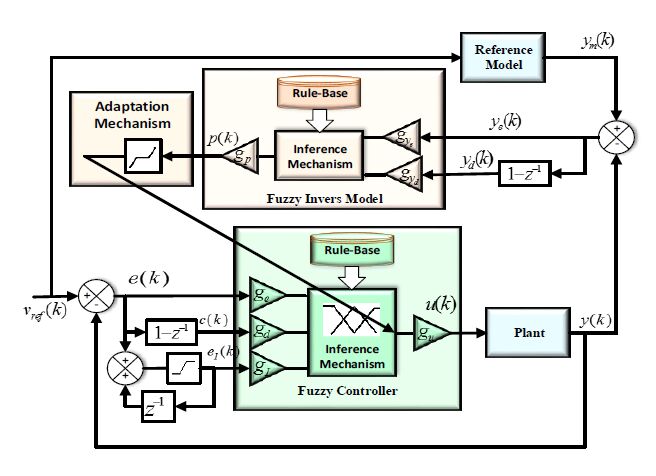
 DownLoad:
DownLoad: 